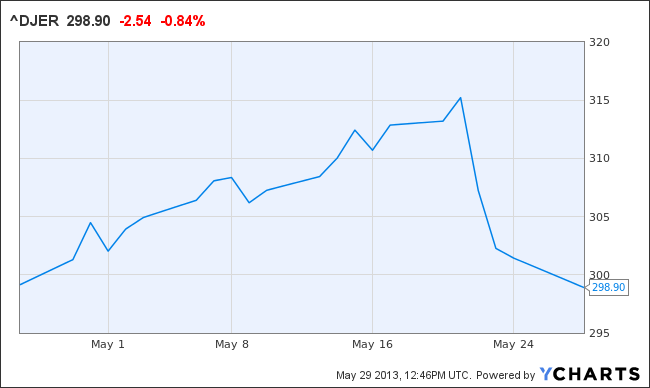Real estate investment trusts (REITs) have sold off sharply over the last week or so. While it is too soon to call this a trend, now is the right time to decide which REITs belong on your wish list. HCP, Inc. (NYSE:HCP), Realty Income Corp (NYSE:O), and STAG Industrial Inc (NYSE:STAG) are three to consider.

Shifting Markets
Market sectors go in and out of style all the time. There has been a search for yield over the last year or so that’s driven up the prices of companies like REITs, which are specifically designed to pass income along to shareholders. While the ride up has been nice, many REITs now offer yields that are historically low.
In the last week or so, however, some of the leading REIT names have begun to falter. If this is the start of a major turn in sentiment, the baby is likely to go out with the bathwater and present major bargains.
If you are an income investor or have been looking for REIT exposure, start making a list now. Here are a few names to put on it.
Diversified Health Care Giant
HCP, Inc. (NYSE:HCP) is one of the largest and most diversified health care REITs. It has exposure to the senior housing, skilled nursing, life science, medical office, and hospital sectors. Its portfolio of over 1,000 properties spans the United States.
It’s worth noting that around two-thirds of the REIT’s portfolio is related to senior care in some way. While that may seem like allot, it is a sweet spot in the industry. As the baby boomers enter retirement they are going to increasingly need more medical care. That’s will push up demand for the very services that are housed in HCP’s properties.
HCP, Inc. (NYSE:HCP) has a long history of annual dividend increases that isn’t likely to stop any time soon. Although the company’s size is likely to limit its growth, since it needs larger transactions to move the bottom line, conservative investors looking for a health care REIT should keep an eye on this broadly diversified company. The recent 4% yield is too low, but a yield around 6% would be a reasonable entry point.
Triple Net Lease
Realty Income Corp (NYSE:O) primarily owns standalone buildings rented out on a triple net lease basis. That means that the tenants are responsible for all of the upkeep of the building. That makes Realty Income’s business model very cost efficient.
The company is one of the largest REITs in this space. It is also one of the most conservatively managed companies around, taking great pains to ensure that the monthly dividend is well funded and growing. In fact, Realty Income Corp (NYSE:O) calls itself “The Dividend Company.” It clearly has a commitment to paying shareholders.
After falling to a 10% yield during the 2007 to 2009 recession, the shares have rallied to the point where the yield is now below 5%. That’s too low for this company despite its industry dominance and long history of regular dividend increases. A large acquisition which bolstered the quality of its portfolio also led to a large one-time boost in the dividend. So, dividend growth in the near term is likely to be quite slow.
Portfolio growth is also likely to slow, since big purchases are hard to come by but needed to move the needle on a portfolio that already has over 3,500 properties in it. Still, income investors should watch for a yield in the 6% to 7% range.
A New Name
Stag Industrial Inc (NYSE:STAG) is a newer, and much smaller, name in the REIT space. It owns over 180 industrial properties in second tier markets and has been growing rapidly. While the stock may sound a little risky, the company is a well financed and disciplined competitor in a highly fragmented market. In fact, STAG’s main competitors tend to be mom and pops that own between one and ten properties. This gives the company a notable edge.
For example, Stag Industrial Inc (NYSE:STAG)’s team takes extra care to research the utility of a property to the company leasing it before it buys. It wants to own buildings that are essential to a lessee’s operations. That helps to ensure that the company sticks around for the whole lease and, perhaps, signs a new lease when it’s time.



